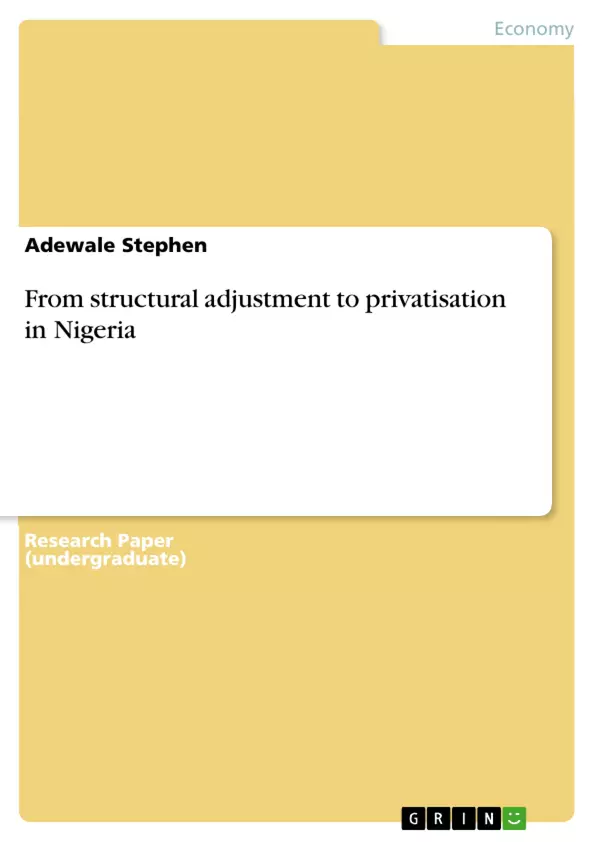Since the arrival of the International Monetary Fund (IMF) at its shores via the great IMF debate of 1985, Nigerian leaders have learnt to demonise public enterprises, castigating them, facilitating their sales to cronies of government officials and using the channels of mass communication to impress upon the citizens that these enterprises are of no use. Today, the general wisdom is that the state should completely recede and that private ownership of the means of production is the only viable approach to efficient production of goods and services, economic growth and development. However, the same factors that led to the collapse of the public enterprises are also afflicting the privatisation exercise. In this paper, the practice of privatisation meant to promote private means of ownership and in turn increase the production capacity of every sector is critically examined. Focusing on the wave and sad experience of privatisation in a period of 2000-2012 which was riddled with corruption, nepotism, lack of good corporate governance and incompetent manpower in the country, the paper concludes that total privatisation of every sector will never solve the economic impasse of Nigeria.
Inhaltsverzeichnis (Table of Contents)
- Introduction
- Public Enterprises in Nigeria Before 1980s
- Structural Adjustment Programme (SAP) and the Privatisation Agenda
- The Nigerian Privatisation Programme
- The Experience of Privatisation in Nigeria (2000-2012)
- Conclusion
Zielsetzung und Themenschwerpunkte (Objectives and Key Themes)
This paper critically examines the practice of privatisation in Nigeria from 2000 to 2012, focusing on its effectiveness in promoting private ownership and increasing production capacity. The paper aims to determine whether total privatisation is a viable solution to the economic impasse in Nigeria, considering the prevalent issues of corruption, nepotism, and incompetent manpower.
- The role of privatisation in economic development
- The impact of corruption on privatisation
- The effectiveness of privatisation in Nigeria
- The challenges of implementing privatisation
- The potential for alternative solutions
Zusammenfassung der Kapitel (Chapter Summaries)
The introduction establishes the context for the paper, highlighting the prevalence of poverty in Nigeria despite government efforts through privatisation. It raises questions about the effectiveness of privatisation and the role of public enterprises in development.
The chapter on public enterprises before the 1980s discusses the historical context of state involvement in the economy, tracing the rise of public enterprises in response to societal imbalances and the role of the state in economic development. The chapter highlights the limitations of public enterprises, including corruption, mismanagement, and technological shortcomings.
The chapter on the Structural Adjustment Programme (SAP) and the privatisation agenda explores the shift from state-controlled enterprises to private ownership, influenced by the International Monetary Fund (IMF) and the prevailing ideology of free markets.
Schlüsselwörter (Keywords)
The paper primarily focuses on the themes of privatisation, corruption, and economic development in Nigeria. It examines the challenges and limitations of privatisation, particularly in the context of a country grappling with significant issues of governance and resource management. Key concepts include public enterprises, structural adjustment, the IMF, and the role of government in the economy.
- Quote paper
- Adewale Stephen (Author), 2014, From structural adjustment to privatisation in Nigeria, Munich, GRIN Verlag, https://www.grin.com/document/281784



